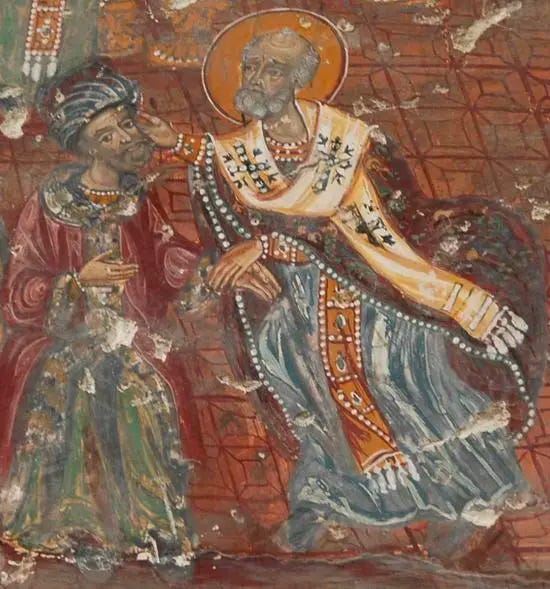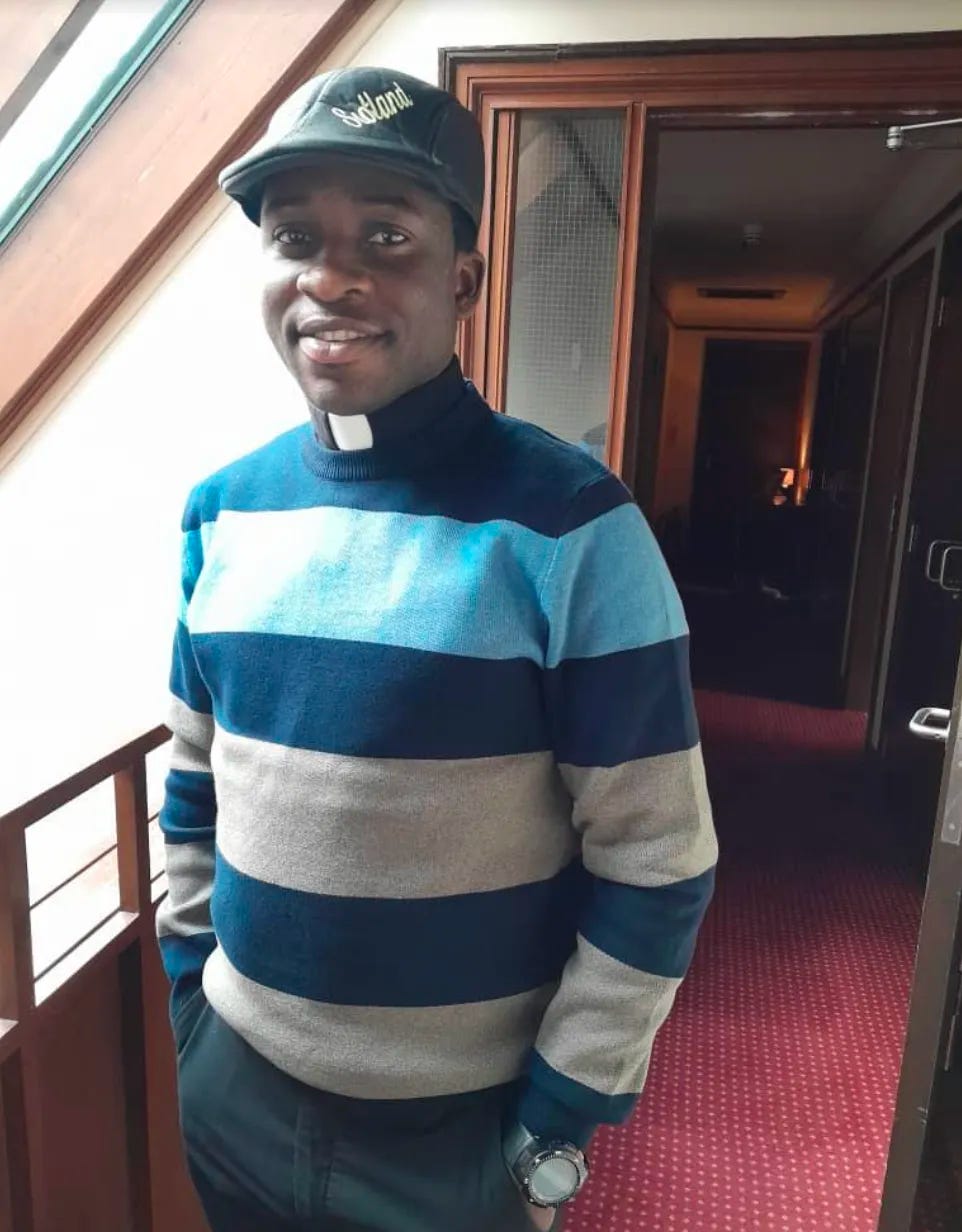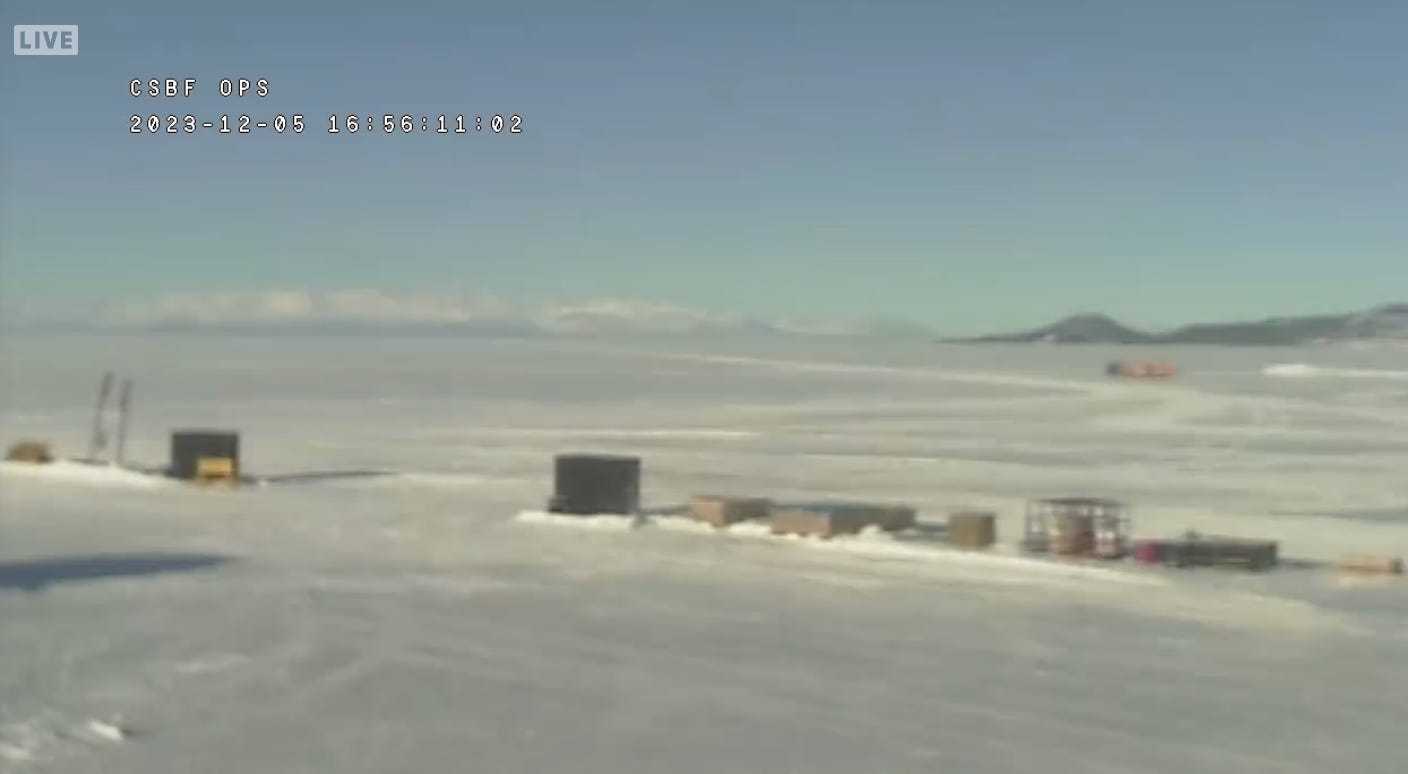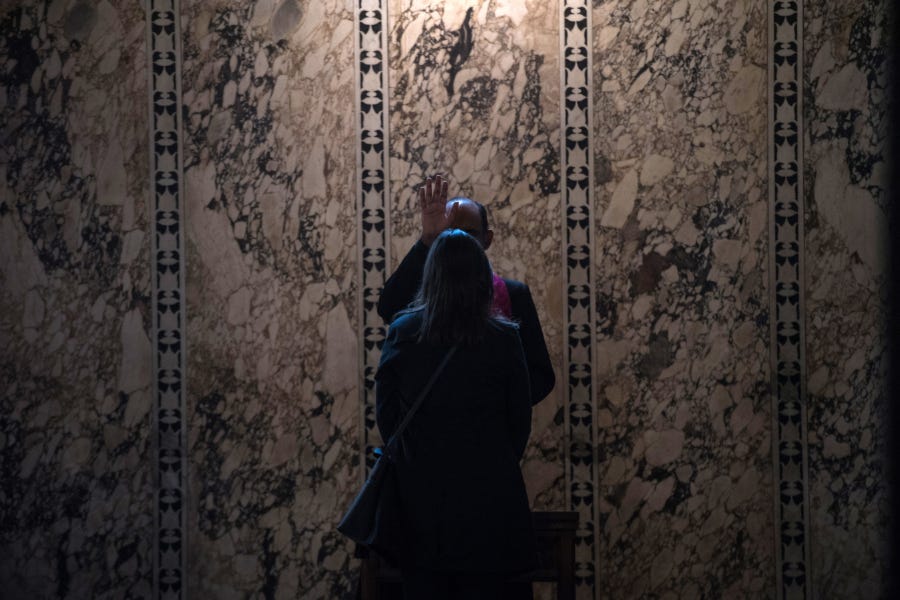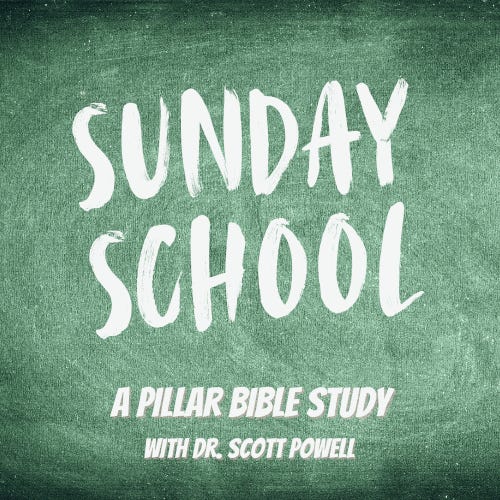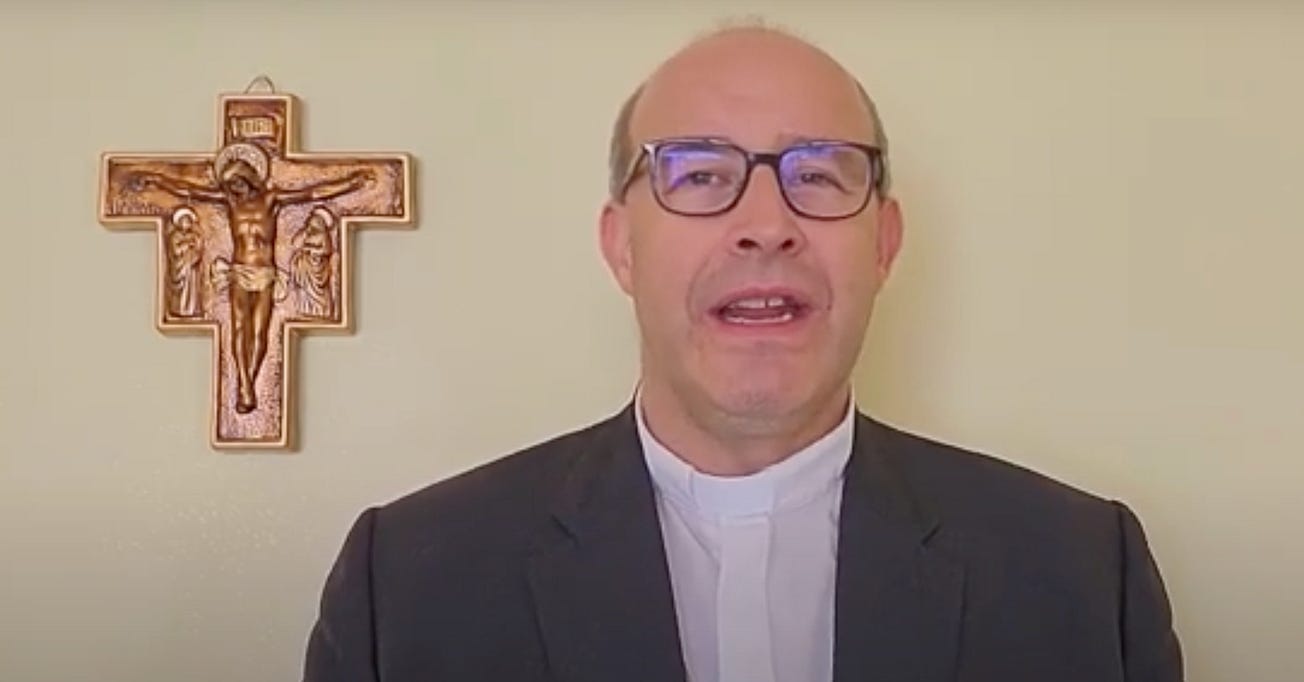Hey everybody,
Today is Tuesday of the First Week of Advent, and you’re reading The Tuesday Pillar Post.
But I want to talk about tomorrow — the feast of St. Nicholas of Myra.
Celebrating the sainted bishop of Myra is a custom in countries around the world, with Catholics and other believers putting out their shoes on the doorstep, to receive in them some candies and coins.
You probably know that this custom got started the same way that fireplace Christmas stockings did — because of the story in which St. Nicholas snuck bags of dowry money into the home of a poor family in his diocese, so that the family’s daughters wouldn’t be sold into slavery.
By tradition, the money — which may have come in through the chimney — landed in shoes (or stockings), and thus, our tradition today.
But in recent years, it seems to me that story is often overshadowed by another — the tale of St. Nicholas’ punch. You’re probably aware of it.
As the story goes, the bishops of the council at Nicea were debating the nature of Christ. Arius argued that Christ was fully human, but not God. “At one point, jolly ol’ St. Nicholas got so angry at Arius’ obstinacy that he socked him right in the face,” Michelle La Rosa recounted last year.
Well, the story is almost certainly not true. But it does have an interesting history. Here’s what we know, thanks to a scholar named Roger Pearse:
Before the 14th century, there is no written record of the Santa-punch-heard-round-the-world at all.
But in 1370, Bishop Petrus of Equillio wrote a story in which he claimed that St. Nicholas “struck in the jaw a certain Arian” during the Nicene Council, and was subsequently deprived of his mitre as a penance.
It’s hard to say where Petrus’ account came from, but you’ll note it’s not even explicitly about Arius — it tells the tale only of a “certain Arian.”
In the centuries thereafter, the story changed, and got more specific.
The next place this pops up is a 16th-century biography of St. Nicholas, which claimed that Nicholas “moved by divine zeal, rose up and gave [Arius] a slap.”
That is the earliest known account of the Nicholas-to-Arius smack, at least the earliest I’m aware of. But by the 18th century, the story had made its way into the guidebook for iconographers published by the Greek Orthodox monks at Mt. Athos — a very important center for Greek Orthodox spirituality.
And thanks to that guidebook, we’ve got icons like this:
But is it true? Probably not.
Then again, it’s also probably not the case that when St. Nicholas gave poor families dowry money, he put it in their shoes, by sliding it down the chimney.
Still, if I were you, I’d celebrate that one tomorrow, and avoid the temptation to slap heresy-holding bishops in the face. Even if you’re filled with “divine zeal.”
St. Nicholas of Myra, pray for us!
Ho ho ho.

The news
Monday, Dec. 4, was the 60th anniversary of Sacrosanctum concilium, Vatican II’s document on the liturgy.
Arguably, Sacrosanctum concilium has more concretely impacted more Catholics than any other document of the Second Vatican Council. But comparatively few have actually read it, unfortunately.
So to help you out, we bring you six notable quotes from Sacrosanctum concilium.
—
Last week, The Pillar reported on a situation in the Archdiocese of Milwaukee — that the archdiocese had not initiated a canonical preliminary investigation into allegations that the archdiocesan judicial vicar had maintained a romantic relationship with a man with whom he has owned a condo since 2003— a man whom he hired as a middle school religion teacher last year.
Instead, the archdiocese said it had “spoken with” the priest — giving him verbal warnings about his “lifestyle.”
But The Pillar’s story had “raised questions about the fidelity of Father Mark to his promises as a priest, and also about the response of the Archdiocese to our knowledge of the situation,” the Archdiocese of Milwaukee said in a statement Friday.
The Pillar exists, in large part, to aid in the reform and renewal of the Church as a mechanism of public accountability. Well, this is what that looks like. Pope Francis has said that dioceses should use canonical processes to ensure clerical discipline and good order in the Church, and the Archdiocese of Milwaukee has now begun such a process.
We’ll continue to track the story.
In the meantime, read about the results of serious reporting on the life of the Church, right here.
The party, often described as “far-right” or “hard-right,” took third place in October’s state elections, giving it a greater number of seats in Bavaria’s powerful state legislature.
How did the bishops respond?
Well, in a statement at the end of a Nov. 29-30 regional bishops’ conference, they said that “A clear line must be drawn against right-wing extremists,” and that they were “shocked by the rise of political forces that advocate inhumane positions.”
But most concretely, Cardinal Reinhard Marx said that he believes membership in the AfD party is incompatible with holding offices in the Church.
Marx is actually not the first to argue that.
And debate over the subject is likely to pick up in Germany, as the AfD party grows, and as the Catholic Church’s powerful lay organization, the ZdK, echoes Marx’s call for party members to be excluded from Church jobs and many volunteer positions.
Of course, American bishops debated a few years ago a number of questions related to political life and Catholic participation. For them, the debate was focused on the Eucharist, whereas in Germany, it’s focused on holding Church positions.
But there are interesting comparisons between the U.S. and German circumstances.
Read about the latest from Germany here.
This week's Pillar Post is brought to you by Thomason Arts. We create original art and affordable limited edition reproductions for contemporary beauty to flourish in community and culture. As working artists we witness to the reality of the Holy Spirit inspiring people today. Use the code “beauty” at checkout and save 15%.
In Brazil, a priest is facing formal accusations of schism, after he made allegedly schismatic statements, and defied diocesan directives to observe the dictates of Traditionis custodes.
The case is interesting because Brazil, the country with the world’s largest Catholic population, has a significant — and growing — traditionalist movement, and the priest has a very broad swath of supporters across the country, and especially online. So this could portend a more pronounced factionalism in the Brazilian Church, which bishops will have to decide how — or if — to address.
—
In January, The Pillar brought you the story of Fr. Isaac Achi, a Nigerian priest who was killed in his rectory by a violent gang, with his body burnt beyond recognition.
Achi has become a national hero among Nigerian Catholics.
And his nephew, Fr. Isaac Abba, is a priest of the same diocese, now serving at a parish in Scotland. Abba is no stranger to tragedy — two weeks before his uncle was killed, Fr. Isaac Abba’s brother Oscar was killed by a violent gang. After Oscar was shot in a roadside attack, local hospitals refused to treat him, for fear of retaliation.
Fr. Isaac Abba recently talked with The Pillar about his family’s tragedies, his heroic uncle, his own faith, and Christian persecution in Nigeria.
—
And while the topic of the interview is serious, please allow me to make another observation about Fr. Isaac Abba.
If the guy doesn’t win “Best Dressed Cleric of 2023,” there is no justice in this world.
Reverend Fathers, face the facts: Isaac Abba dresses better than you do.
You could buy a sweater like that — and you probably should — but could you pull it off that well?
Convicted of numerous charges related to her democracy activism, Chow announced this week that she has decided to remain in Canada, and will not return to Hong Kong to comply with conditions of her release imposed by the Hong Kong government.
“I don’t want to be forced to do anything any more, and I don’t want to be forced to go to mainland China any more,” she wrote Sunday.
—
Last week, the Catholic world was abuzz with news that Pope Francis had decided to evict Cardinal Raymond Burke from his Vatican-owned apartment, and to withdraw from Burke the stipend extended to cardinals living in Rome, as a punitive measure against the cardinal, who is a vocal critic of Pope Francis’ leadership decisions.
The Associated Press said it confirmed that story, and several big newspapers followed suit, while The Pillar told you it had confirmed only part of it — that there had been a meeting at which the pope had discussed a punitive measure, pertaining to Cardinal Burke’s stipend and apartment, mentioning specifically that Cardinal Burke has been a source of “disunity” in the Church.
For his part, papal biographer and sheep-herding smallholder Austen Ivereigh said last week that the pope had told him directly that Francis “had decided to remove Cardinal Burke’s cardinal privileges — his apartment and salary — because he had been using those privileges against the Church.”
All of that made headlines around the globe.
But the story was more complicated than most outlets reported.
So on Sunday, The Pillar brought you some much-needed clarity — we broke the news, from multiple sources close to the process, that Burke had received a Nov. 24 letter from the Vatican, which informed him that he would need to begin paying market rent on his apartment effective Dec. 1 (the same day he actually got the letter), or vacate the apartment by Feb. 29.
The Pillar confirmed that the letter did not mention Burke’s stipend, or, for that matter, designate what the market rate would actually be for the apartment.
Coupled with Ivereigh’s account, that seems to indicate that the decision was not a bureaucratic one, but is personal to Burke.
In short, we’ve brought you the straight facts on a complicated news story, one important to a lot of Catholics, and we’ll continue to keep you updated on that.
But this morning, the Italian news blog which first began reporting emanations of all this published a column saying that The Pillar’s reporting is false, and that Burke has received no such letter.
Here’s what’s going to happen: That column will make a bunch of rounds on social media, and a set of blogs and websites will write about it, and people will text it to me all day, and ask me if we’re going to “respond.” I’ve already gotten a bunch of those texts this morning.
No, we’re not. Journalism is not a species of professional wrestling. I don’t feel compelled to respond every time an Italian blog, or an American YouTube provocateur, or some Vatican cardinal, calls into question our reporting.
I stand by our reporting, and I stand by our record. We don’t report something unless we’ve got it — and we’ve got it.
I’m not trying to be self-righteous about this. But ink-on-ink dramatics bore me. And they should offend you, because they mostly exist as a way of ginning up web traffic, for the sake of inflaming your passions and thus making money. They’re usually a hustle, a grift, or a carnival bark.
I hope you don’t waste your time on that, because none of it is healthy for the spiritual life, or for the common good — but it can be a big temptation, especially when social media algorithms encourage it. It’s just noise.
If you want to know what’s happening with Cardinal Burke, read it here at The Pillar. We’ll tell you what we know, and we’ll tell you what we don’t know.
We’ll keep trying to find out more, and when we do, we’ll tell you. We’ll focus, in short, on the actual story.
And we’ll do it without the theatrics.
Currents of hot air
Here’s something else cool.
NASA will spend the early part of December launching a series of balloons — some as big as football stadia — over the continent of Antarctica, as part of its annual Antarctic Long Duration Balloon Campaign.
Some of this year’s balloons will float some 31 miles above the Antarctic surface, and carry payloads of observational equipment weighing several tons.
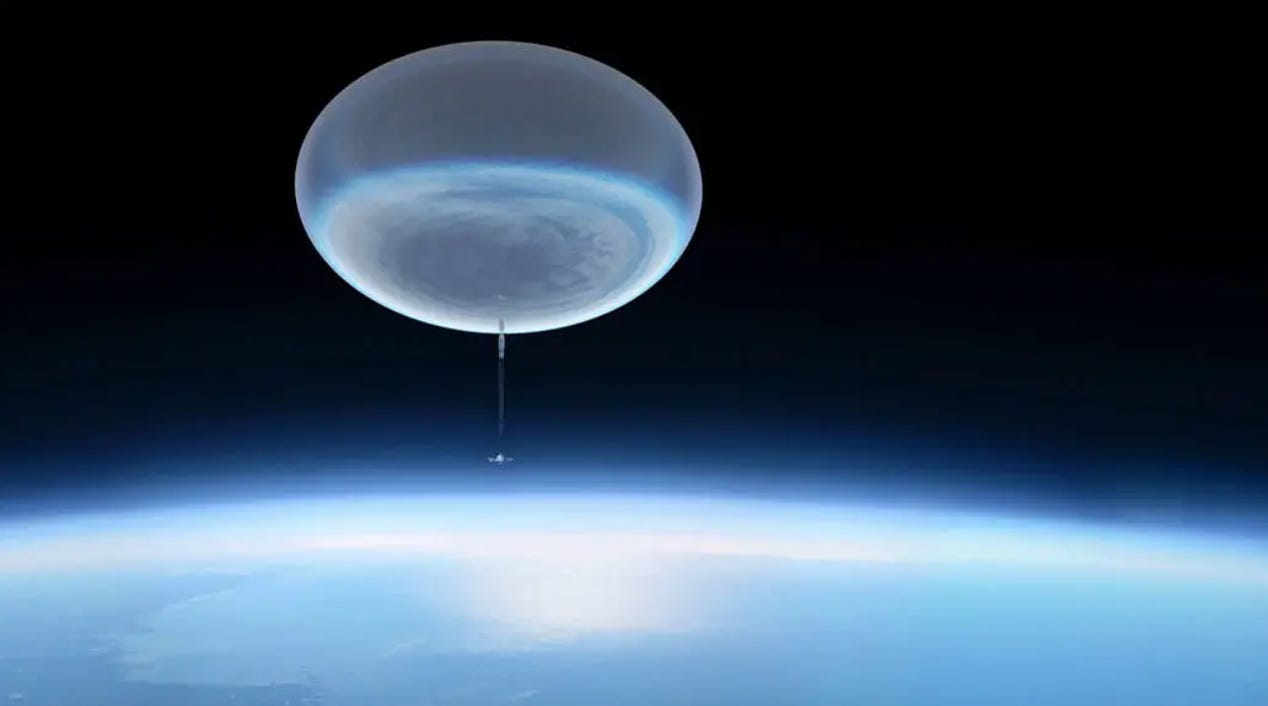
Most will float for several weeks, possibly as long as two months. And because Antarctica is now experiencing 24-hour daylight, they’ll stay at the same altitude the entire time, without the ascent and descent cycle that usually comes with the temperature fluctuations of day and night.
NASA scientists hope that one balloon will catch the south pole’s circumpolar wind current, and stay aloft for 75 or so days.
One balloon, GUSTO, will aim to use its instruments to map a big part of the Milky Way, including the very center of the galaxy. At the same time, emission detectors will allow astrophysicists to learn about the lifecycle of the cosmic material found between stars, the “interstellar medium.”
Another experiment, on a relatively small balloon, will measure the sound of the stratosphere, over a continent with almost no human-generated sound. That can be then compared to the noisy stratosphere above most of our own heads, and we can learn something how much ambient noise we’re creating — and eventually, probably something about its impact on the environment, and even on the human body.
So all of this is cool, and a very good use of tax dollars. Especially because you can track the balloon missions here.
And you can watch a live stream of the launch site right here.
There’s not much happening right now, but stay tuned.
And if you want to know more about other legendary slaps-and-punches in Christian history, we’ll, we’ve got that for you too, actually.
And, then, please, allow me one request: Clerical readers, it’s Advent. People want to pray more. And it’s cold outside. So keep your churches unlocked. Make sure they’re accessible. Allow the Lord to welcome anyone who wants to spend time in his company. That’s evangelization — especially if you lose the key.
In the meantime, please be assured of our prayers. And please pray for us. We need it!
Happy advent!
Yours in Christ,
JD Flynn
Editor-in-chief
The Pillar

